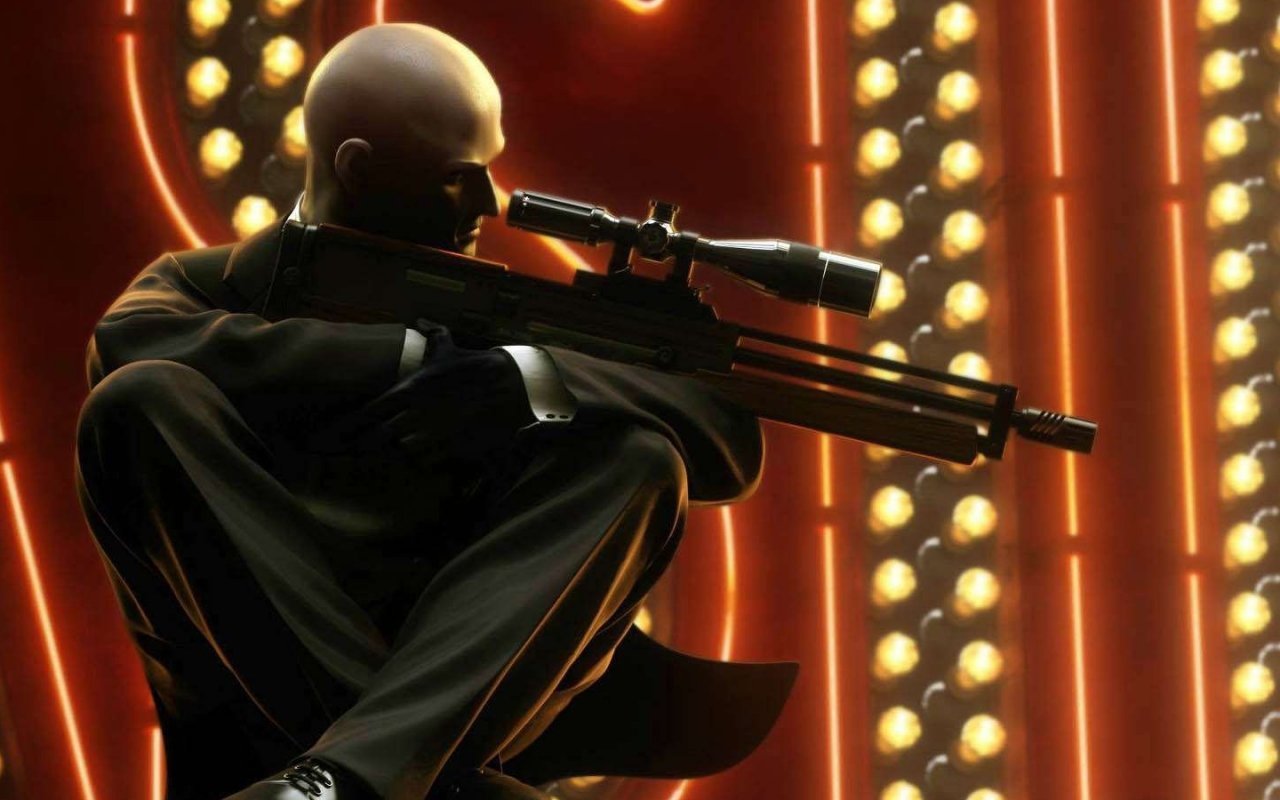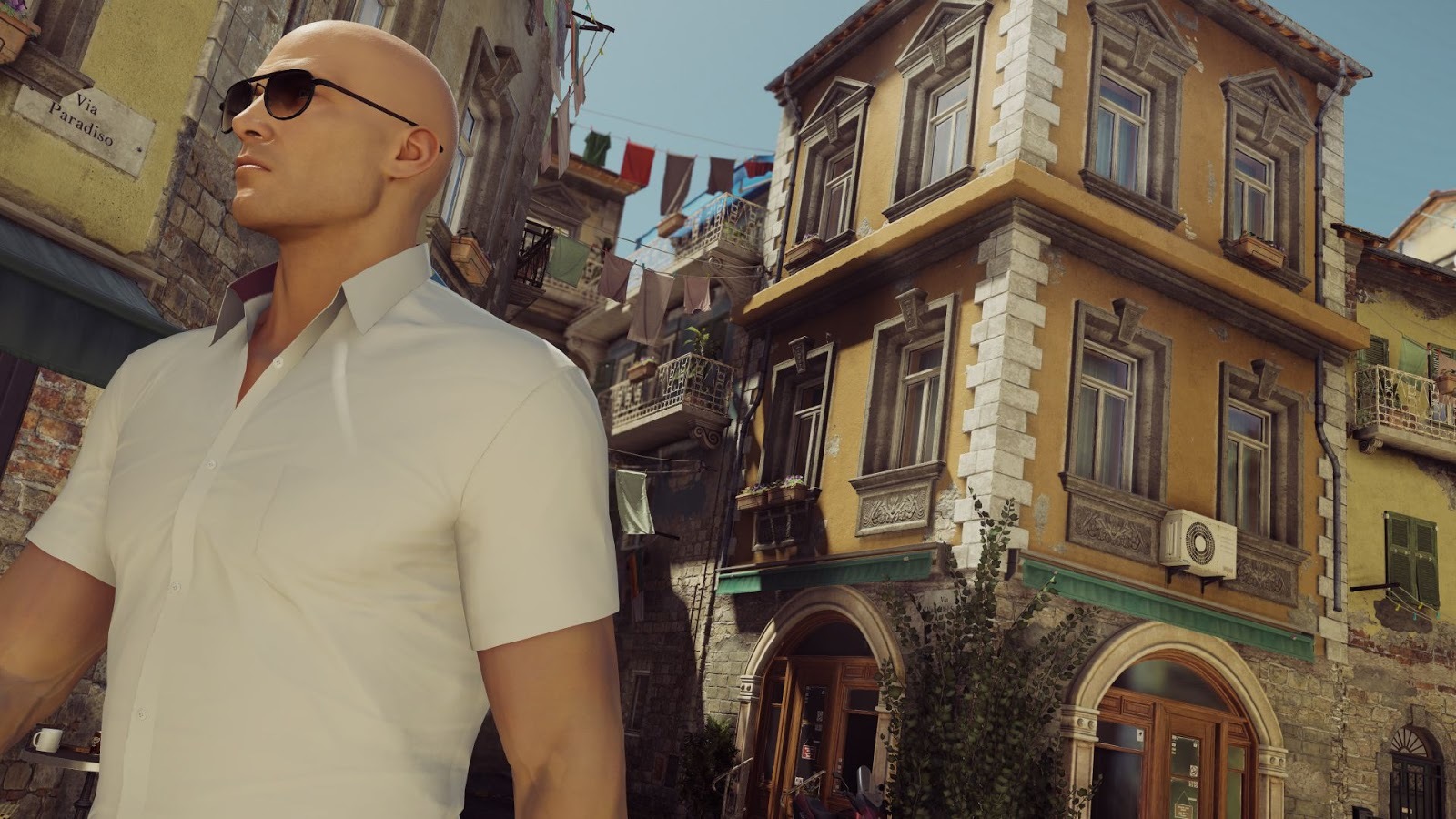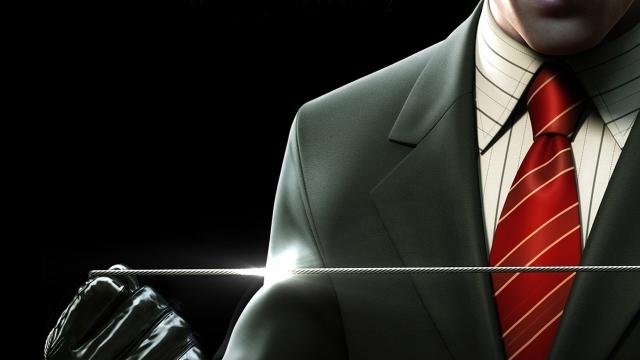This week, Square-Enix announced that it was parting ways with Hitman developers IO Interactive. So why don’t we take some time to appreciate one of the best crafted stealth series around?
Hitman is an action-stealth series that forged a unique identity in the early days of the genre. While games like Metal Gear Solid (1998) focused on spatial navigation and remaining out of sight, and the Thief series (Thief 2, 2000) incorporated shadow and sound into gameplay, Hitman, released in 2000, took a different approach. You wouldn’t cower behind boxes or lurk in shadows. You would stand in plain sight, aided by disguises, and strike your targets when they were unaware. The thrill was in how brazen you could get, how audacious a kill you could manage. In many ways, the Hitman series draws a direct lineage to Silas Warner’s original Castle Wolfenstein games, released in 1981. Both provide labyrinthine spaces, tasking the player to survive through a mixture of impersonation and intelligent planning. It’s a strong foundation that led to a memorable game series.
The first entry into the series, 2000’s Hitman: Codename 47, was largely an experiment in gameplay concepts such as disguises and open levels. It was the sequel, Hitman 2: Silent Assassin (2002), that clearly established one of the series’ most enduring strengths: Player-imposed challenge. A robust ranking system judged players on their tactics, accounting for how often they were spotted and how many unnecessary kills they racked up. The implicit goal was to become a “Silent Assassin”, incentivising players to replay missions until they became the perfect killer.

The nature of these challenges only grew more complex at the series progressed. Hitman: Blood Money (2006) gave NPCs the ability to remember what the player was wearing, making mistakes more costly. It also allowed players to better manipulate targets and make their deaths look like accidents. You could replace a prop gun so that an actor was shot in an opera performance, rig a barbecue to explode, or shatter a glass-bottomed pool situated over a cliff, taking out any enemies who happened to be swimming there.
Ultimately, the series came to stress the game world through an interweaving system of NPC behaviours and player interactions. The world of Hitman felt extant and believable. It was half simulation, half playground, where players could observe NPCs or disrupt their behaviours. You could learn the ins and outs of a location, get a sense of the people, and completely fuck with it all.
2012’s Hitman: Absolution proved a misstep, eschewing this formula to double down on action heavy gameplay and a grindhouse aesthetic that felt at odds with the series’ established tone. It also had assassin nuns. Fans felt like the series could use a course correction, which the developers at IO Interactive handled with aplomb.
The most recent Hitman (2016) took various risks and experimented with the series’ core gameplay to create an intelligent and captivating experience. Levels were doled out incrementally, which initially felt far too much like a way to slowly wear down people’s wallets, but proved a smart way to pace content, allowing the developers to create some of the most memorable levels in the entire series: A fashion show in Paris where you could walk the runway; the lavishly furnished halls of a Bangkok resort; a Japanese hospital where futuristic uniforms are key-coded to allow access to new facilities. They were imaginative, full of memorable NPCs, and brimming with possibility.

This came hand in hand with an admirable dedication to players, as IO Interactive implemented multiple ways to extend gameplay, providing challenge and humour in equal measure. The game’s “Escalation” missions demanded players assassinate random targets in a series of increasingly silly but difficult challenges. These missions would limit your time, require you to wear special disguises, and task you with securing specific weapons so you could get each kill. The developers added elusive targets to the game at random intervals. Players had only one chance to take them out. The stakes were high and made for intense assassination missions unlike anything else in the series.
By adding various ways to interact and play the game, Hitman ended up as not just a stellar stealth game but a standout example of a AAA game functioning as a “service”, which has become one of the video game industry’s favourite buzzwords these days. The game would highlight community-created challenges, hand out unique rewards for completing missions, and regularly add new levels over the course of 2016. It was a solid model that gave the game life.
The appeal of Hitman rested in the narratives players create. Perfect assassinations were empowering tests of planning, while escalations demanded wild improvisations that could easily explode in players’ faces. Hitman took the series’ central conceits — self-challenge, expansive levels, imaginative solutions and emergent drama — to the extreme. The result was an astounding game with a ton of replayability.
As of right now, we don’t know if IO Interactive will be bought by another publisher or retain the rights to Hitman and bring us another season, but it would be a loss if the series sputtered out now, just as it’s hit its stride.

Comments
3 responses to “The Hitman Series Has A Long History Of Excellence”
Hitmans a truly polarising experience I’ve found through readings and playing all the games (hey personally I love the series 🙂 ). You also missed out Contracts, which was considered a lesser game due to its level design (Blood Money generally considered the high point of the series earlier iterations and deservedly so with such fantastic levels). When it hits its highs its awesome but its lowpoints like Absolution are true shockers. I did love last years Hitman though, for me the true highpoint of the series, can’t wait for season 2.
I, too, loved last years Hitman, but this news makes me worry for a second season without IO.
Indeed I am a bit worried too. I hope they work out a deal or something to retain the right to continue the game themselves…
How many people do you genuinely believe thought that Absolution was “shocking”? That would assume it was a terrible, near unplayable mess. You can claim it is a low point in the series (which many would argue it is not), but claiming Absolution as a “true shocker” is ridiculous.
Every major Hitman release has a review aggregate somewhere between 75% to 85% and Absolution sits right in the middle of that, thus the article is spot on when it points out the consistently solid lineup that the Hitman franchise has created.